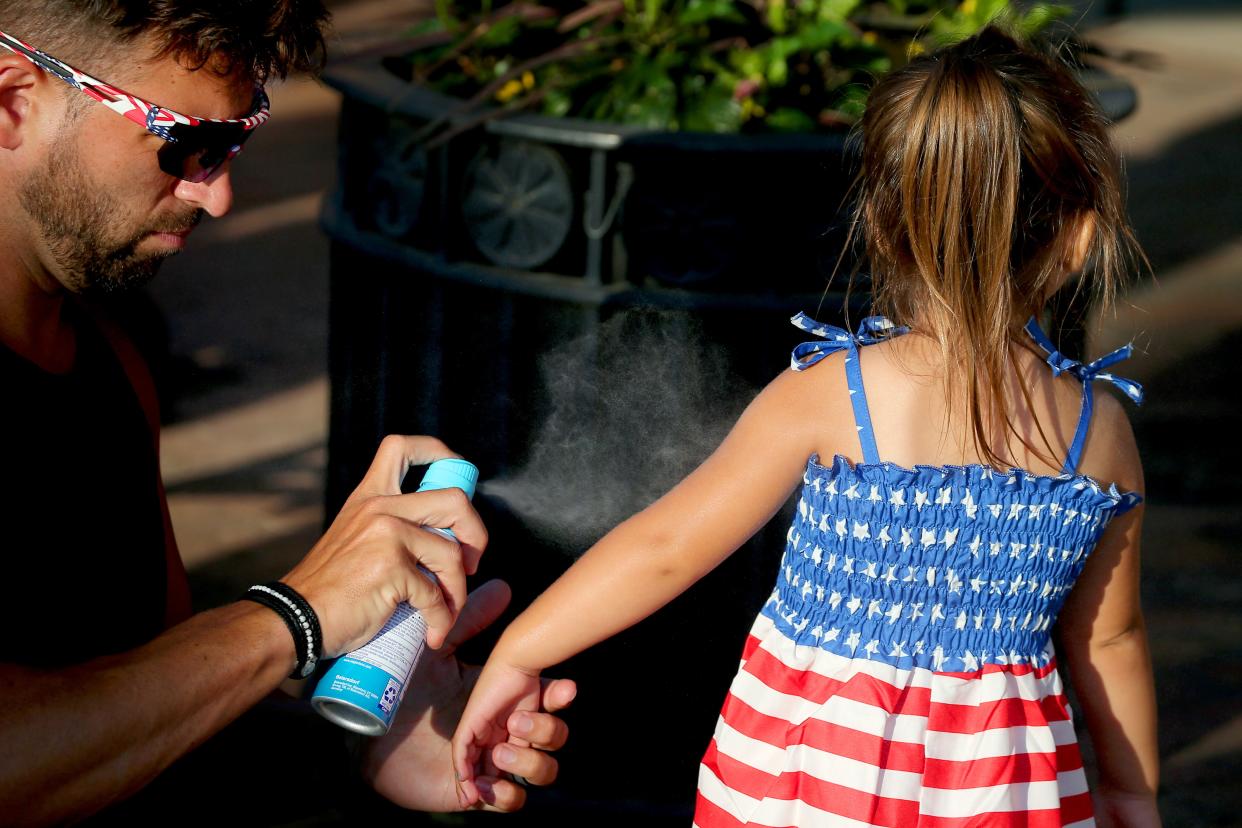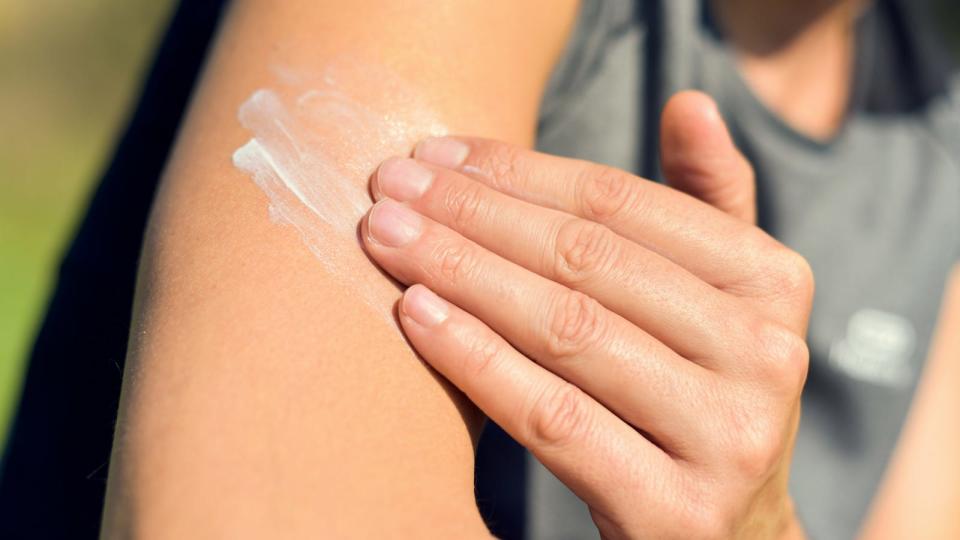MU dermatologist has these recommendations for keeping skin safe from the sun

Sunscreen is a necessity for those who spend time outdoors and though the risks of sun damage to the skin increases in the spring and summer, it's there year-round, said Kari Martin, a dermatologist with University of Missouri Health Care.
"Most of us, probably all of us, really should be applying sun protection or using sun protection strategies year-round and obviously becomes more important as the UV index increases," Martin said on a Zoom call with reporters. "So for us that's, you know, probably about April. Or May through September or October. But this, the parts of our skin that are exposed to the sun really will benefit from sun protection year-round. So that's mostly our faces the neck, sometimes the upper part of the chest and the back of the hands. Sometimes that may also include the forearms."

And SPF of 30 or higher provides enough protection, Martin said.
"When you're picking a sunscreen it's best to use one that has an SPF of 30 or higher," Martin said. "That is because at the SPF level of 30 it's blocking about 97% of the sun's rays. So you do get a small improvement in more sunray blocking if you go to an SPF of 50, let's say, but really an SPF of 30 or higher gets a lot of benefit."
It's important to remember to reapply sunscreen after 90 minutes to two hours and if you have been swimming, she said.
People with light skin have a greater risk of melanoma or other skin cancers, but protection benefits people of all skin tones, she said.
"We're all very individually and uniquely susceptible to the sun and it affects our skin in different ways depending on what our baseline pigmentation is," Martin said. "People that have fair skin especially those with red hair and blue eyes are much higher risk for melanoma and some types of skin cancer. But folks with darker skin also are at increased risk of melanoma as well, just not as high if you have lighter skin,"
Sunscreens are safe, she said.
Though we absorb some Vitamin D from the sun, too much sun will damage the skin. Supplementing one's diet with Vitamin D is recommended, she said.

Sunscreen is only one method of protection, she said.
"Sunscreen is really our last line of defense for sun protection," Martin said. "The first things we should think about when we're trying to keep our skin healthy in the sun is avoiding being outside during those peak hours so doing as much outside as you can before 10 a.m. And after 2 to 3 p.m. is the first line of defense. After that we really should be focusing on finding shade using some protective clothing including hats and sunglasses. And then the last line of defense is the use of our sunscreen."
Most people get the most damage from the sun when we're young and it accumulates, Martin said.
"We're off during the summers and we're playing outside and you get lots of sun damage that builds up slowly over time" as young people, she said. "As you get into the older years especially if you have an inside job. We're just not outside quite as much, so we get a lot of sun damage early in life. The fairer skin types with the red hair and blue or green eyes are at higher risk also people that freckle very easily, or people that make many moles. Those are all subgroups of individuals that are at a little higher risk for skin cancer development."

Things to look for and have checked are moles that are unevenly pigmented and have irregular borders, she said. Moles that are red, white, blue and black may be a problem. So-called "ugly-duckling moles that don't like any of your other moles also can signal problems. If a mole changes over time also is something that needs to be looked at.
If you get a sunburn, the damage is done, Martin said. But one can keep it cool by applying ice or a cold compress, Aloe also can help relieve the pain.
"Once the sunburn happens, unfortunately we just have to let it heal," Martin said.
Roger McKinney is the Tribune's education reporter. You can reach him at rmckinney@columbiatribune.com or 573-815-1719. He's on X at @rmckinney9.
This article originally appeared on Columbia Daily Tribune: Take these steps to avoid skin damage, sunburn and skin cancer

